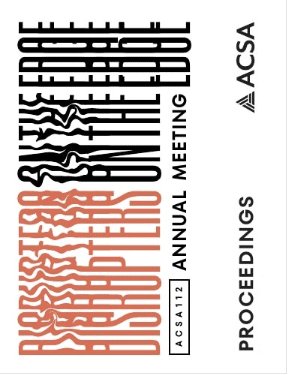Author(s): Michelle Laboy , Moira Zellner , Amy Mueller , Dan O'Brien , & Dean Massey
Climate change impacts are not evenly distributed across the globe. Inequities also emerge at a local scale where buildings have the most perceivable impact, affecting anything from access and continuity of the public realm to microclimates. Design decisions can exacerbate or mitigate micro spatial inequities—i.e. significant local variation in environmental hazard exposures, like heat, air pollution, and flooding. Green Infrastructure (GI) is a range of nature-based solutions with the potential to mitigate environmental hazards. Decentralizing GI is critical to health and resilience, building redundancy and capacity through a distributed network of smaller system nodes that are less prone to cascading failures. Architecture projects can support decentralization, targeted mitigation, and incremental implementation; however their contribution to urban resilience, health, and environmental justice needs to be better characterized to support rationalized expansion of such approaches. This requires ways to explore complex and dynamic interactions of buildings within and beyond site boundaries, including: (1) methods for measuring local variation in hazards at relevant spatial scales and (2) tools for modeling the impacts of interventions in inclusive conversations with local stakeholders. This research examines an equity-focused approach to co-designing GI in architecture projects, using data and tools to inform and measure the impact of individual building projects and, eventually, networks of projects. In collaboration with the city of Chelsea, MA, our transdisciplinary team is studying sensor networks and a participatory modeling process to demonstrate how architecture projects can generate and leverage local knowledge about micro spatial inequities and mitigation by GI to advance broader community health goals. Co-design activities around one pilot site reveal how decentralization becomes a significant paradigm shift—even among practitioners—eliciting ideas about maximizing capacity, connectivity, co-benefits, and shared responsibility. This paper examines the term decentralization in a multidisciplinary discourse, shares lessons from a specific context, and discusses implications to architectural practice.
https://doi.org/10.35483/ACSA.AM.112.43
Volume Editors
Germane Barnes & Blair Satterfield
ISBN
978-1-944214-45-6

 Study Architecture
Study Architecture  ProPEL
ProPEL 
